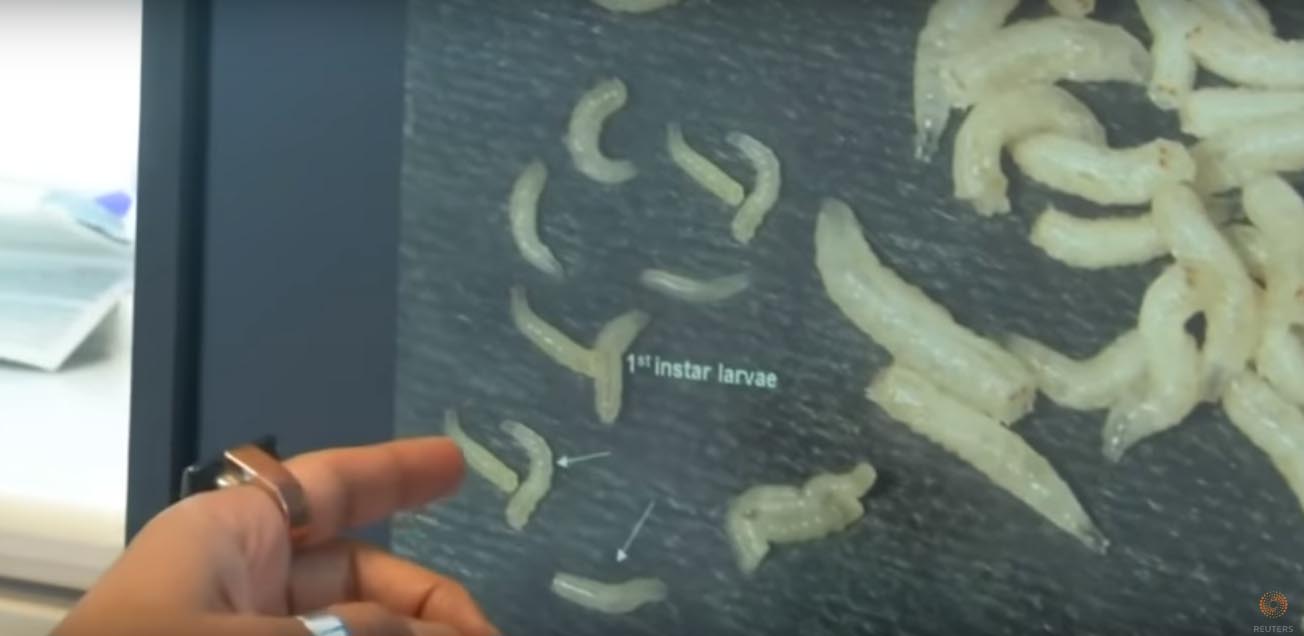Fears mount over killer superbugs, but simple steps on farms can help
ROME: Imagine a world where a small cut on your finger or a routine hip replacement surgery could prove fatal. This is the future humanity is facing unless the use and abuse of antibiotics is curbed in both humans and animals, experts have warned.
"The world is running out of antimicrobials," said Maria Helena Semedo, deputy director-general at the UN Food and Agriculture Organization (FAO). "Without global action, lives and livelihoods could be under threat."
Antimicrobials are drugs, including antibiotics, that destroy dangerous pathogens and are essential for human and animal health and the production of food.
But infections resistant to drugs due to their overuse could kill as many as 10 million people a year by 2050 - posing the greatest threat to human health, says the World Health Organisation.
The use of antibiotics on farms in populous nations such as China and India is expected to soar, and the more antibiotics are given to animals the more likely drug-resistant bugs will affect people's health.
The good news, experts say, is that simple steps can mitigate the spread of antimicrobial resistance from animals to humans.
"It's very costly to get new medicine on the market so we have to preserve the ones that we have, or we can do better on animal husbandry practices and the environment," said Juan Lubroth, FAO's chief veterinary officer.
This means better nutrition, better sanitation and better procedures to protect farms from pests and diseases - washing hands and changing shoes before entering a farm, buying and selling healthy animals and vaccinating them regularly.
These measures could fend off diseases and reduce the need to use antibiotics, Lubroth told the Thomson Reuters Foundation.
Raising awareness on the proper use of drugs and the dangers of misusing them is also vital, said Tim Petersen, head of animal welfare at the Danish Veterinary and Food Administration.
"Only sick animals should be given antibiotics," he said.
In 2010, when Denmark set limits on how much antimicrobials pig farmers can use, awareness of drug resistance was very low, Petersen said. Since then, their use has fallen by a quarter with no negative impact on productivity, he said.
SOLUTIONS
The animal health industry is developing solutions such as vaccinations and animal-only antibiotics with the private sector in the vanguard of innovations, said Carel du Marchie Sarvaas, head of the Brussels-based industry group HealthforAnimals.
"No government is going to come up with new antibiotics or vaccines, and no government is going to have the scale and scope," du Marchie Sarvaas said.
This month, the World Health Organization urged farmers to stop using antibiotics to promote growth and prevent disease in healthy animals because the practice fuels dangerous drug-resistant superbug infections in people.
The UN's health body says the bulk of antimicrobials administered worldwide are for animals, with around 80 percent of total consumption of medically important antibiotics coming from the animal sector in some countries.
But du Marchie Sarvaas said there was not enough data to pinpoint how and where the agricultural sector is contributing to antimicrobial resistance in humans.
"There's no link actually shown yet in terms of how (cutting antibiotic use in farming) is reducing antimicrobial resistance in humans," he told the Thomson Reuters Foundation.
"Use in the agricultural sector is likely contributing to that but there's actually little data of how that happens."
NORDICS LEAD THE WAY
Europe, especially Nordic countries, have been leading the way in the agricultural sector on action and gathering data.
Years before the Danish government set antimicrobial thresholds for farmers, it stopped veterinarians from making money from the sale of medicine. It has since set up a database to keep track of antimicrobial use in both animals and humans.
Norway, where the use of antibiotics is strictly controlled, has swapped antibiotics for vaccines in salmon farming.
The Netherlands, the world's second largest food exporter, has cut antimicrobial use in poultry and livestock sectors by 64 percent by making antibiotics use on farms transparent and cutting the use of medically important antibiotics in animals.
A recent paper from the University of Bristol in Britain, which has multiple projects on antimicrobial resistance, analysed data from commercial dairy farms in southwest England.
Stopping the use of medically important antibiotics and reducing antibiotics overall use did not negatively affect cattle health or milk production, it said.
PRESSURE
But the European experience is far cry from emerging market nations facing pressure to feed their growing populations and where changing diets have led to demand for more meat.
As growing and wealthier populations consume more meat, antibiotic use in agriculture is expected to increase by 67 percent between 2010 and 2030, according to the World Bank. In Brazil, China, India, Russia and South Africa, antibiotic use could double in the same period.
The World Bank is exploring if financial incentives may help smaller, domestic-focused food producers in the developing world, said Enis Bar??, the World Bank's lead on antimicrobial resistance.
The World Bank is also looking to see if its loans and investments could be tailored to help tackle drug resistance, such as when establishing a public health laboratory network in East Africa or improving disease surveillance in West Africa, he added.
Meanwhile pressure from the consumer to eat meat free of antibiotics has spurred moves to curb their use.
In the United States, it was the consumers who forced the country's largest poultry producers and fast food outlets, including McDonald's, Burger King and Chipotle, to rid antibiotics from their chickens.
"No one can escape the effects of antimicrobial resistance," the FAO's Semedo said. "When antibiotics fail, we all lose."






